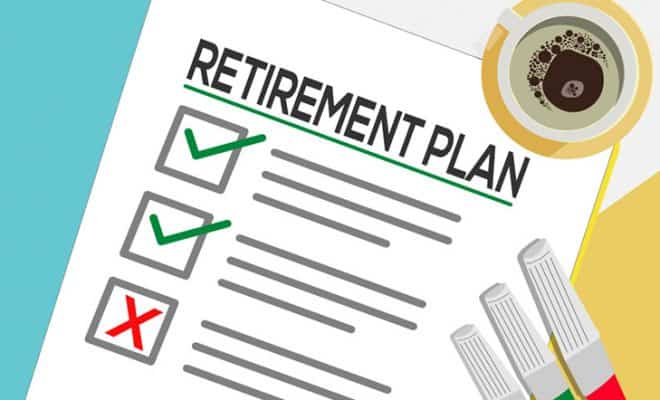Few people would say saving for retirement is a breeze, but it’s been even more of a challenge than usual over the last two years. Many Americans had to halt their retirement contributions while they were out of work, and some even tapped their savings early. That’s a recipe for enormous financial stress.
If you’re ready to break out of this worry and get your retirement plan back on track, start by doing the following five things in 2022.
1. Take stock of where you are
Look at your retirement accounts, and make note of their current balances, as well as your monthly contribution amount. Pay attention to what you’re invested in too, especially the fees those investments carry. For those investing in mutual funds, your fee will come in the form of an expense ratio. This is the percentage of your total assets in the fund that you pay to the fund manager each year.
Knowing this information is crucial because you can’t figure out how much to save per month until you know what you already have. Don’t forget to look at old retirement accounts from former employers as well. Consider rolling these over into an IRA or your current 401(k) so you can manage your funds in one place.
2. Figure out how much more you need
Hopefully, you have some idea of how much you need to cover your expenses in retirement. If not, now is the time to figure that out. Think about when you plan to retire and how long you believe you’ll live. Then, estimate how much you’ll spend annually in retirement.
A retirement calculator can help you do this, and it will tell you how much you need to save per month to reach your goal. Most also have space for you to enter how much you already have in savings
You’ll need to estimate the rate of inflation as well as the rate of return on your investments to get an accurate savings target. Use 3% per year for inflation. Many calculators do this already. For your investment rate of return, use 5% or 6% per year. It’s possible your money grows more quickly than this, but you don’t want to be too optimistic and wind up falling short.
Once you have your monthly savings goal, decide if it’s realistic. If it is, proceed to the next step. If not, see if you can make some changes. Consider delaying retirement for a few months or years or altering your budget today to free up some extra cash. Keep exploring different options until you find a plan that works for you.
3. Choose the right accounts
A 401(k) is the best place to put your savings at first if you qualify for a company match. But if you don’t get a match or you’ve already claimed it, an IRA might be a better choice. It has lower annual contribution limits, but it also gives you more freedom to choose what you want to invest in. Plus, you can decide whether you want to pay taxes up front or wait until retirement.
If you qualify for them, you may want to explore other options like health savings accounts (HSAs) and self-employed retirement accounts to see if these are worth adding into your retirement plan as well.
4. Choose the right investments
Reevaluate what you’re investing your money in as well. Try to keep your expense ratios under 1% whenever possible so you’re not losing too much of your savings to fees.
If you decide to invest in individual stocks, make sure you spread your money around between at least 25 different companies in a few different sectors. This will help reduce your risk of loss.
Make sure you reevaluate your portfolio a couple times a year to make sure it stays balanced and it still matches your risk tolerance. Over time, you’ll want to gradually move your money away from stocks and into bonds and other safer investments to protect what you already have.
5. Make regular contributions
Once you have a plan in place and you know where you want to put your money, you just need to start making contributions. It’s best to automate this process if you’re able to do so. That will reduce the risk that you’ll forget to set aside funds for retirement.
Those with 401(k)s should be able to designate how much they want withheld from each paycheck, and many IRA providers will enable you to link a bank account and set up an automatic transfer schedule.
If you stick to this plan for all of 2022, you should make real progress toward your retirement goals. Then, at the end of the year, redo these steps again and make any changes necessary to keep yourself headed in the right direction.

